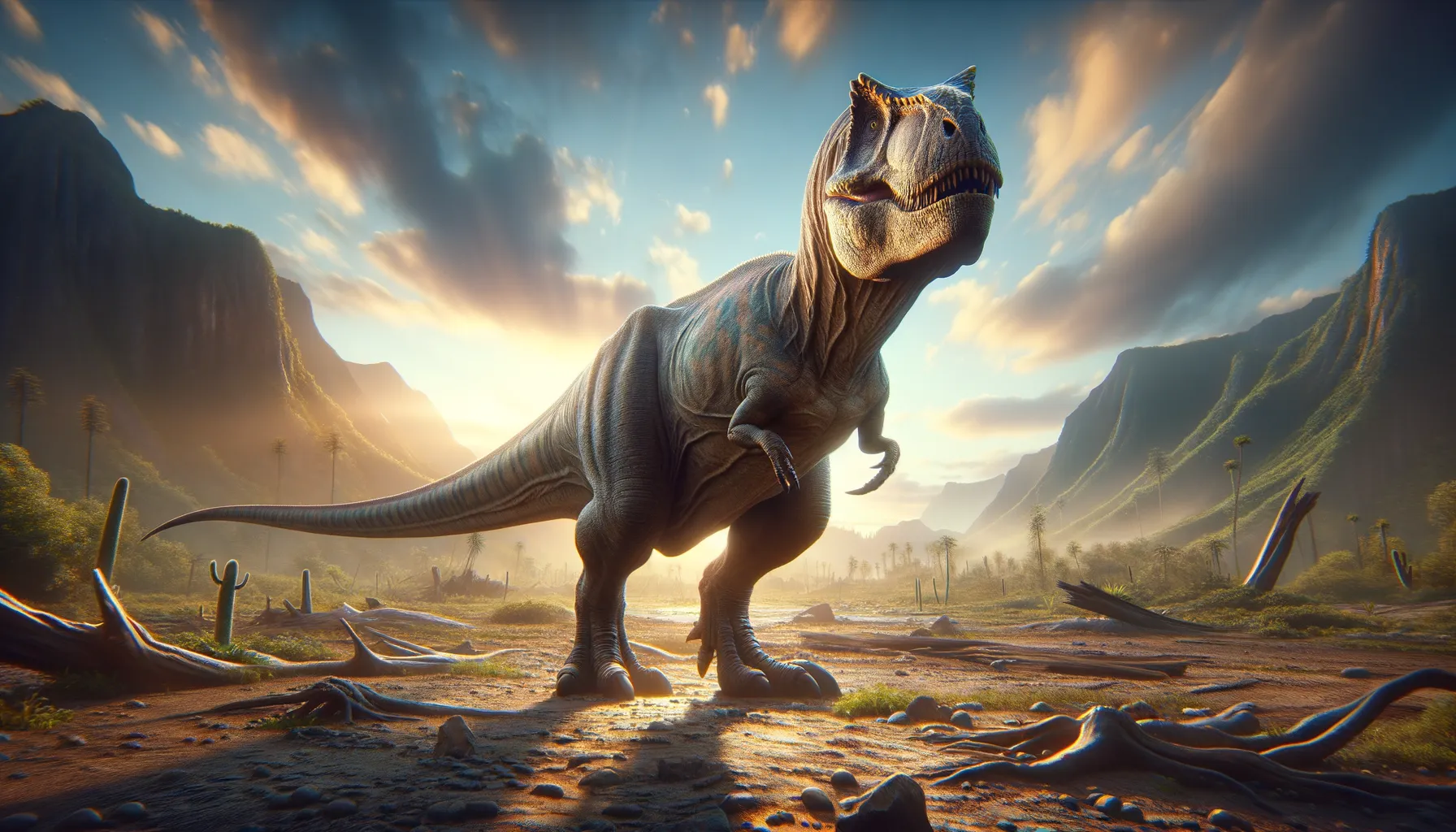
Normanniasaurus
Giant of the Cretaceous forests.
Period
Cretaceous
Length
Estimated to be 8 to 10 meters long.
Height
Around 3 meters tall.
Weight
Approximately 3,000 kilograms.
Normanniasaurus was a slow-moving, large dinosaur from the Cretaceous period. Its fossils, discovered in what is now France, have offered scientists a glimpse into the life of this formidable herbivore. With a considerable weight and length, it navigated its environment with a steady, cautious pace, relying on its massive size as a defensive strategy against predators.
Diet
Normanniasaurus was a herbivore, primarily feeding on the abundant plant life of its era. Its diet consisted of ferns, cycads, and other vegetation it could graze on, using its powerful jaw to process tough plant material.
Hunting
As a plant-eater, Normanniasaurus did not hunt but foraged for food. Its long neck allowed it to reach high vegetation, while its bulk provided some measure of defense against carnivores.
Environmental challenges
Living in a time of significant ecological change, Normanniasaurus faced competition for food from other large herbivores. It had to adapt to varying climates and occasional natural disasters, such as floods or fires. Predators, especially large theropods, posed intermittent threats, requiring it to stay in groups for protection.
Speed
Normanniasaurus moved rather slowly due to its heavy build.
Lifespan
It potentially lived for several decades.
First discovery
Discovered through fragmentary fossils in France.
Fun Facts
- Normanniasaurus is a type of dinosaur known as a sauropod, which is famous for its long neck and tail.
- It lived during the early Cretaceous period, about 125 million years ago.
- Fossils of Normanniasaurus have been found in Europe, specifically in France.
- Its name, Normanniasaurus, means 'Normandy lizard,' named after the region where it was discovered.
- Normanniasaurus was a herbivore, meaning it only ate plants.
- This dinosaur belonged to a group called Titanosauriformes, which includes some of the largest creatures ever to walk the Earth.
- Despite its massive size, it likely had a small head compared to its body.
Growth and Development
Normanniasaurus grew steadily, reaching its full size several years after hatching from eggs. Its early life was vulnerable, relying on the protection of adult dinosaurs and dense, forested habitats for cover. Growth rates might have varied based on food availability and environmental conditions.
Habitat
Normanniasaurus inhabited lush forested areas that provided ample food. The environment was humid and warm, fostering a diversity of plant life. Forests and woodlands offered the perfect backdrop for its slow-paced lifestyle, with water sources nearby ensuring hydration.
Interaction with other species
This dinosaur interacted primarily with other herbivores in its community, competing for the same food sources. It coexisted with various species of carnivorous dinosaurs, necessitating vigilance and group cohesion to deter potential attacks. Mutual environmental adaptation was a feature of its interaction with surrounding flora and fauna.
Natural lifespan
Normanniasaurus likely lived into its 30s or 40s given favorable conditions.
Reproduction
Like many dinosaurs, Normanniasaurus reproduced by laying eggs, potentially in communal nesting grounds. The selection of nesting sites was crucial, with a preference for areas offering protection from predators and extreme weather. Parental care might have extended to guarding nests and tending to young hatchlings initially.
Social behaviour
Normanniasaurus was likely social, moving in herds that provided safety from predators. Group living facilitated reproductive opportunities and efficient foraging, with collective behaviors enhancing survival. Communication through visual signals or vocalizations might have played a role in maintaining herd cohesion.
Fossil locations
Fossils of Normanniasaurus have been found in present-day France, providing vital insights into its anatomy and lifestyle. These discoveries have primarily come from sedimentary rock layers known for preserving remains of ancient life. Each fossil find contributes to a growing understanding of the diversity and distribution of dinosaurs in Europe during the Cretaceous period.
